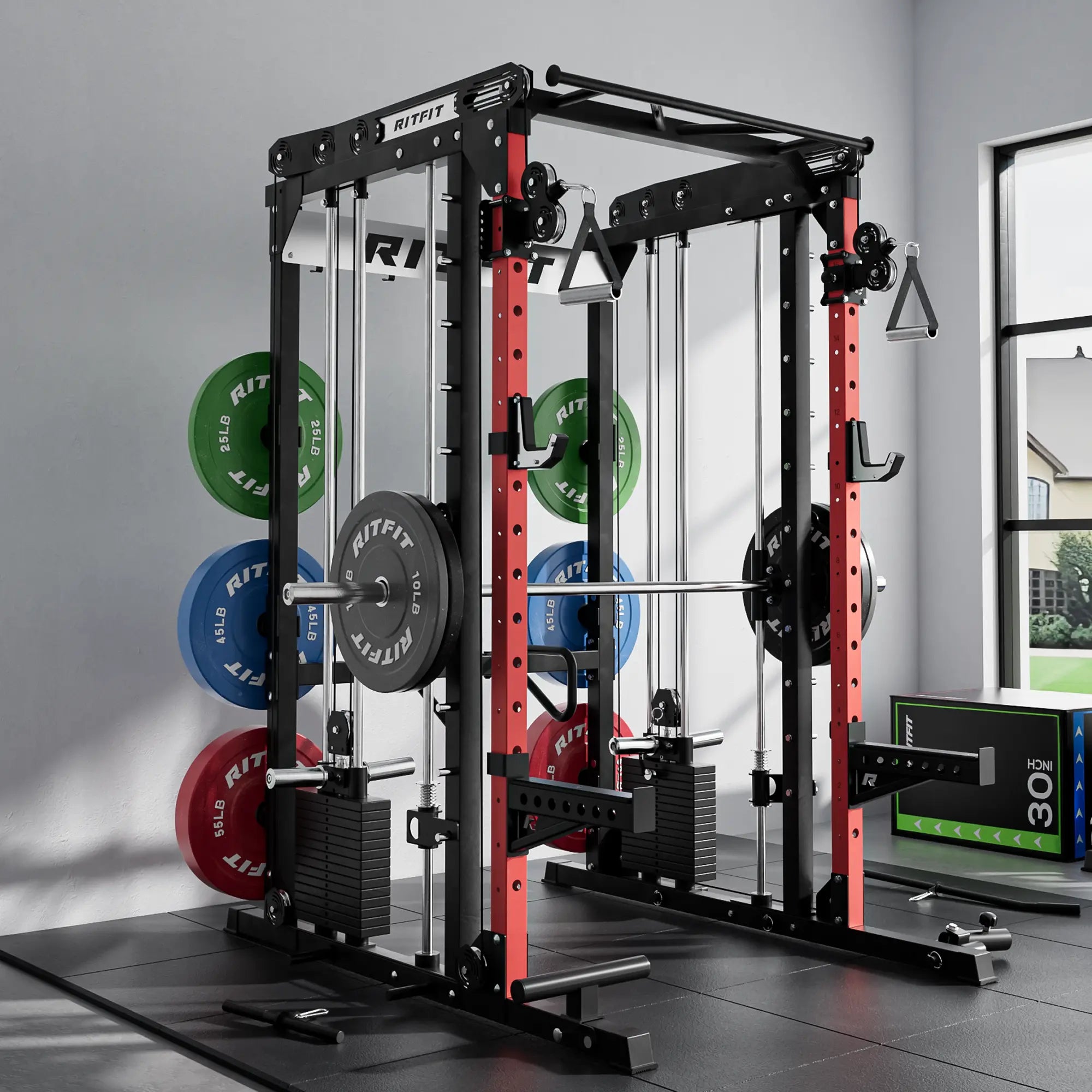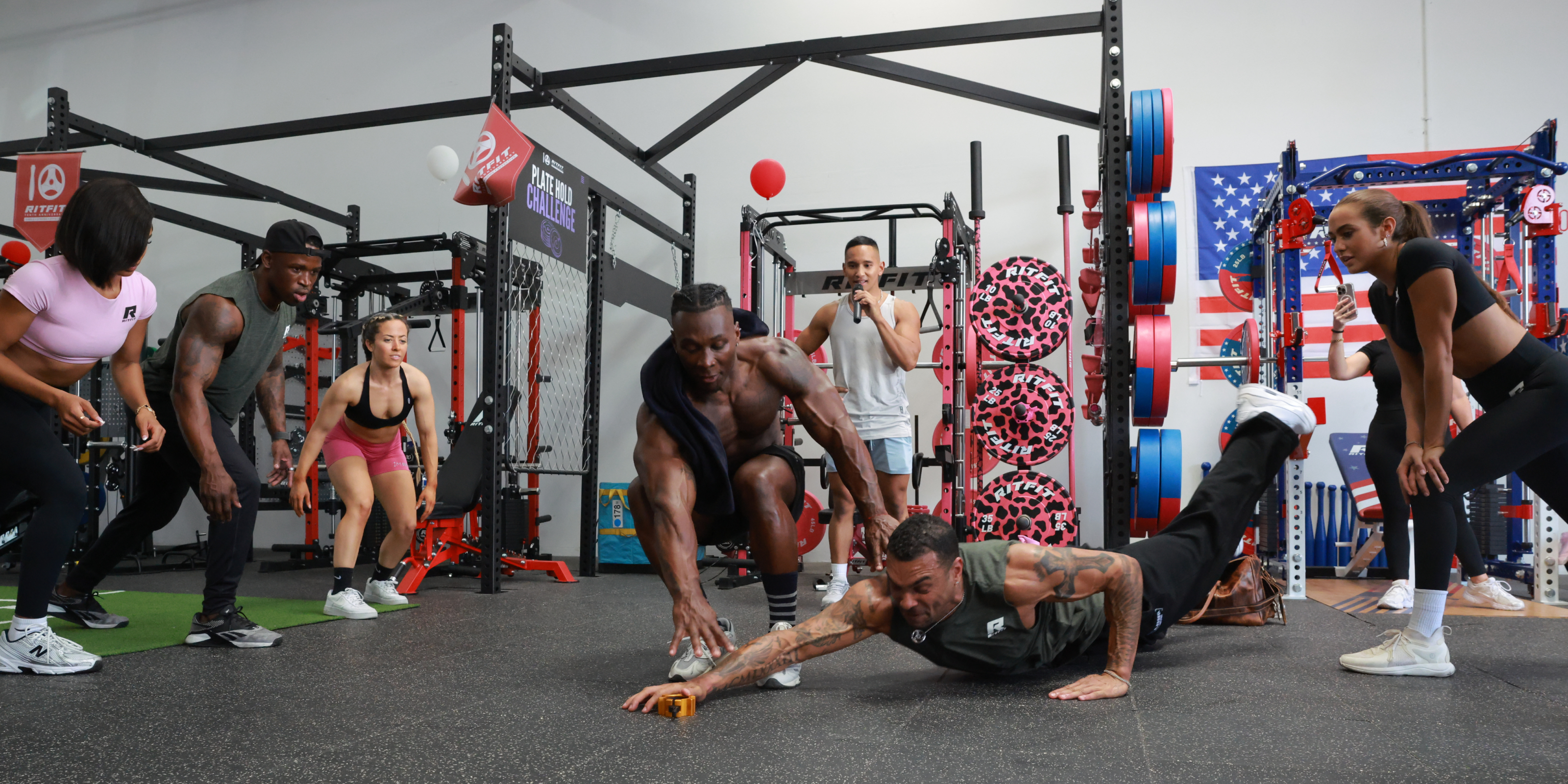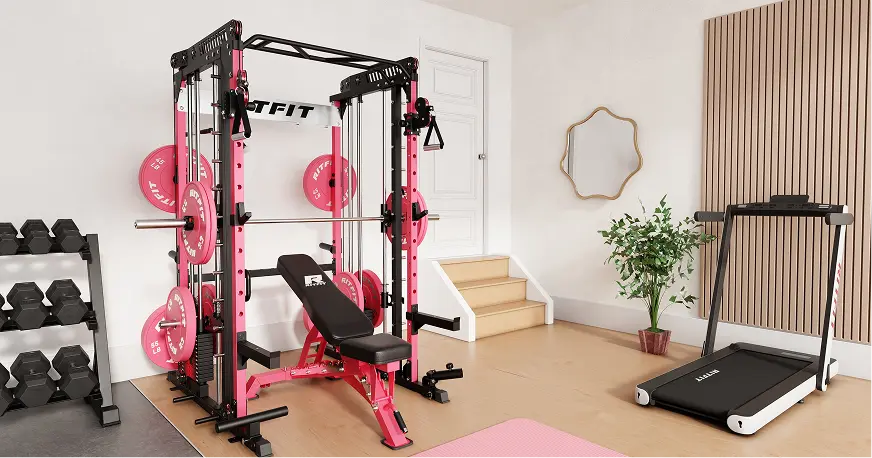Squat racks are among the most exciting additions to a fitness enthusiast's workout equipment. It is a big step up from the basic workout equipment such as dumbbells, barbells, benches, etc. Being a real asset in your workout journey, it helps you achieve an excellent physique by training your legs and lower back muscles, given that you pick the right squat rack dimensions.
It is essential to consider whether a rack is viable for your gym. They're neither small nor light, so you should always be aware of the space you're working with.
In this article, we'll tell you everything you need to know about a squat rack dimensions, such as its size, weight, etc., so that you can make an informed decision.
What is A Squat Rack?

A weightlifter gets inside the rack, puts the barbell on their shoulders, and squats, eventually rising back and placing it on the rack again. A squat rack is an excellent device for strengthening and developing thighs, hamstrings, and lower back muscles. Although other machines can help build legs, many professionals prefer a squat rack.
It is preferable because it involves free weights, promoting better technique and balance. It is also incredibly helpful in maintaining strict workout discipline, as you must stay focused throughout your workout session.
Since someone can squat much more than a bench press, a squat rack is usually constructed from heavier metal to support more weight. The two stands have enough space between them for the lifter to stand upright, and the cradles firmly support the barbell. Squat racks also have a low beam for the lifter to place their heel on and push off for support.
What are Squat Rack Dimensions?

There are no universally standard squat rack dimensions, just like there is no standard size for human beings. However, rough estimates can be made about a range of squat rack measurements:
- 90 inches tall (7.5 feet)
- 40-50 inches wide
- 24-50 inches long (depth)
These squat rack dimensions aren't final and do not involve any extra attachment, only serving as a starting point. As already mentioned, height and width are the two most important measurements that help you decide on your squat rack.
How Wide is a Squat Rack?

When measuring the space needed for the rack, ensure you're leaving sufficient space on both sides for barbells and loaded weight plates. Luckily, even the standard rack width of a large frame is manageable compared to height, falling between 40-50 inches.
Having a width of 50 inches provides a strong base for stability and prevents barbells from toppling over. As a general rule, include two feet on each side of the rack to have a comfortable workout experience.
It is also essential to consider the width of the barbells when you're calculating the squat rack dimensions. The widest barbells on the market are Olympic-sized barbells, which can reach as much as 7.2 feet. Therefore, the total width you should look at for installing your squat rack is around 10 feet.
Nobody wants to install the squat rack but finds out they cannot work out because their calculations are off.
Full-Sized Rack
A larger rack typically measures between 80-85 inches. Add another 24 inches on both sides for easy maneuvering, so the minimum width you're looking at is 12 feet.
Small Rack
A small rack with no extensions has an average width of 40 inches. However, when you add a standard 84-inch bar with some room for maneuvering, you'll again need a space of around 12 feet at most.
How Tall is a Squat Rack?

Usually, squat rack height falls between 80-84 inches, while the tallest ones are 92-96 inches. However, the latter category is designed for 6'3" or above users who want to use the squat rack for pull-ups. The shortest squat racks are between 68-72 inches and are intended for people under 6 feet.
Height is even more important when installing the rack in a place with a low ceiling clearance, like in the basement. To be on the safe side, you’d have 8 feet of height to install the rack and an additional inch to do chin-ups.
Let's look at different rack sizes and their heights:
Full-Sized Rack
A full-sized rack has a typical height of 90 inches or higher. If you add a multi-grip pull-up bar, you can easily reach above 95 inches. Installing it under an 8 feet ceiling isn't practical, as there is no space left for pull-ups.
Small Rack
A small rack shaves around 10 inches from squat rack dimensions and drops down to 80 inches in height. The shredding of extra height means they can be installed in my spaces without any problems.
How to Use a Squat Rack?

This guide will assist you in understanding how to use the squat rack properly according to your home gym size and train as effectively as possible.
Step 1: Adjust the Rack Properly
The very first step for using a squat rack is to adjust it according to your height, as a rack that is either too high or too low can be risky. A rule of thumb to adjust the height is that the barbell should sit at your chest height. You can tweak the height to maximize the benefits of your squat training.
Step 2: Load the Bar
If you want to avoid injuries, it is crucial to calculate the amount of weight you can lift easily beforehand. Also, ensure that the weights on both sides are equal before lifting. Squat racks have clips to keep the weights in place, so make sure you use them to prevent the weights from wobbling.
Step 3: Balance the Bar Properly
Any kind of workout without balancing yourself properly can be extremely risky. It is especially important when you are squatting with a squat rack. Therefore, ensure the bar is equally distributed on both sides of the shoulders so you can squat smoothly.
Step 4: Lift & Step Back
Push off the ground with your feet and lift the barbell on your shoulder. Step back and unrack the barbell, and you must feel completely balanced. If there is any hint of unbalance, put the barbell on the rack and try again.
Once you have lifted the barbell on your shoulders, step away from the rack so you can squat easily without knocking into it.
Step 5: Time to Squat
Keep your feet shoulder-width apart and try to direct them outward. To maximize the potential of your squat, try to go below the parallel line. Keep your knees out and chest up as you come back to the standing position.
Step 6: Set the Barbell on the Rack
Once you have completed the desired number of repetitions, it is time to rest for a bit and set the bar back on the rack. Stay balanced and place the bar on the rack. Make sure it is perfectly balanced on both sides before you leave it. You can set the weight plates in a DIY weight plate storage on the side of the rack.
Conclusion
If you have read this guide on squat rack dimensions, you are set to choose the right squat rack for your gym and make the most out of it. Before purchasing one, it is crucial to know that there are tens of brands out there, and selecting one can be a headache. RitFit is your best choice if you want to save time and energy.
RitFit provides world-class squat racks that offer you an incredible workout experience. Our Power Cage is the best budget rack available on the market, with an impressive 1000lb weight capacity for multiple strength training exercises.
















